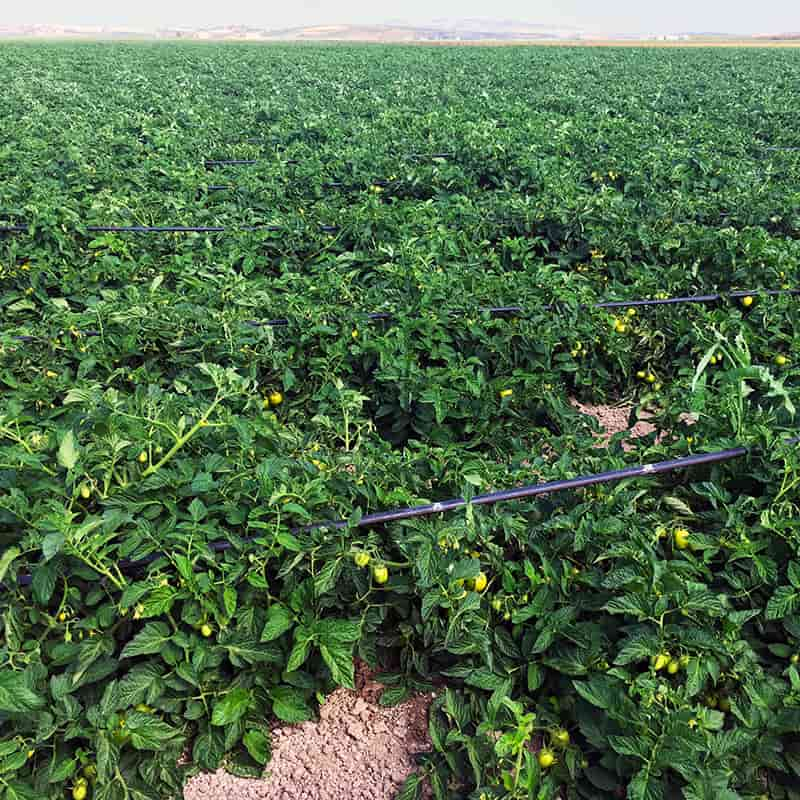

The tomato is one of the most widespread horticultural products in the world and the one with the highest economic value. The demand for them is steadily increasing, and with it their cultivation, production and trade.
World production is 85 million tonnes (FAO 2007) and the largest producing countries in the world are China, Mexico, USA, Turkey, Spain, Italy and Egypt. At the continental level, according to FAO data, Asia accounts for just over 50%, followed by the Americas with 20%, Europe 15% and the rest from Oceania and Africa.
Temperatures above 35ºC affect the development of the fruit, due to poor ovule development and the development of the plant in general. The ripening of the fruit is significantly influenced by the temperature, so that values close to 10ºC and above 30ºC produce yellowish tones.
The tomato plant is not very demanding in terms of soil. The crop grows well on well-drained soils (loose and rich in organic matter) as well as on sandy clay soils. Tomato is the crop that best tolerates salinity conditions in both soil and irrigation water.
The planting frame is established according to the size of the plant, which in turn depends on the commercial variety grown. The most frequently used is 1.5 metres between rows and 0.5 metres between plants, although in the case of medium-sized plants it is common to increase the planting density to 2 plants per square metre with 1 m x 0.5 m frames.
It is not only the amount of water that determines the yield, but also the time of application, which is dictated by the physiology of the crop. It is necessary to know the water requirements at each phenological stage of the crop in order to obtain the maximum economic yield.
In protected tomato crops, water and a large part of the nutrients are generally supplied by drip irrigation and will depend on the phenological stage of the plant and the environment in which it grows (type of soil, climatic conditions, quality of irrigation water, etc.).
In soil cultivation and tillage, the establishment of irrigation timing and volume is basically determined by the following parameters:
